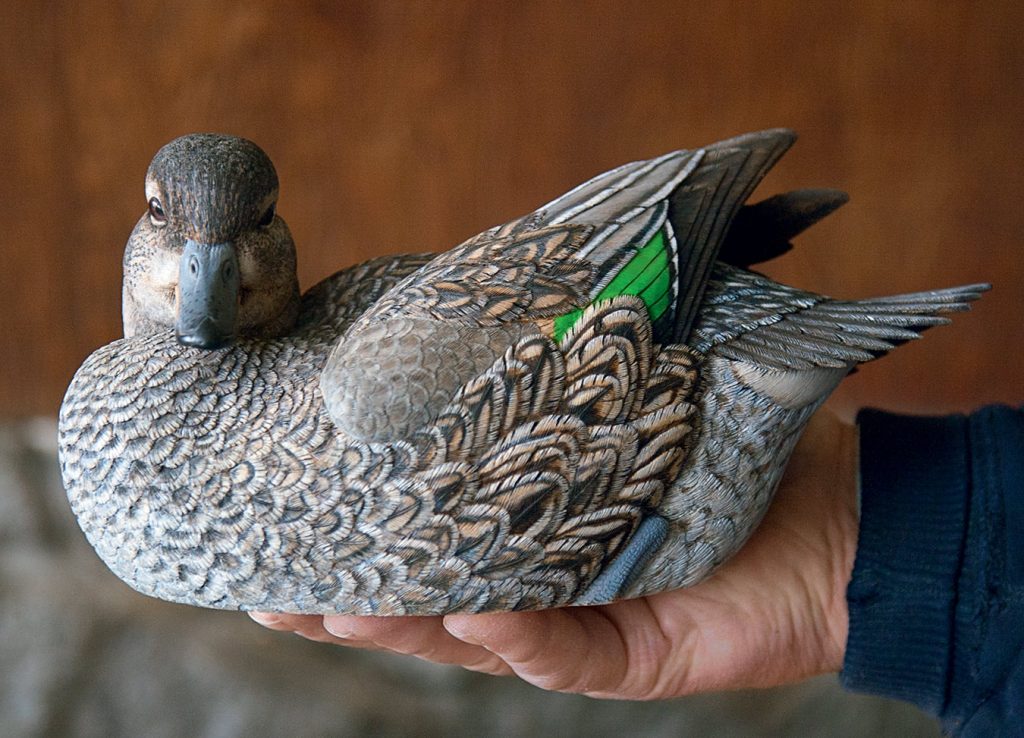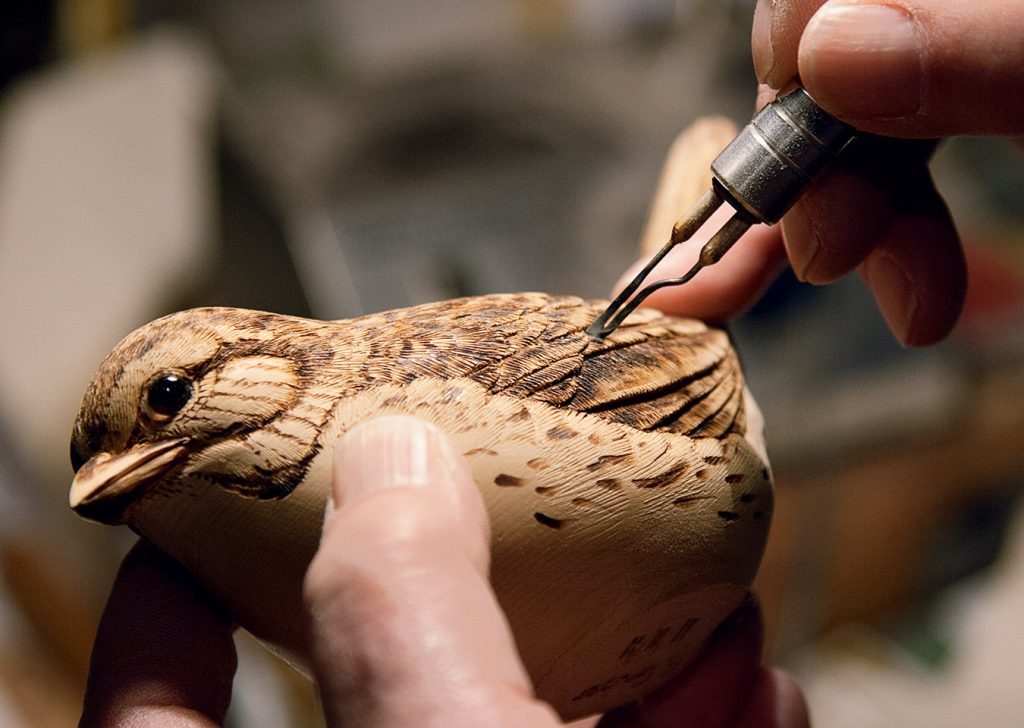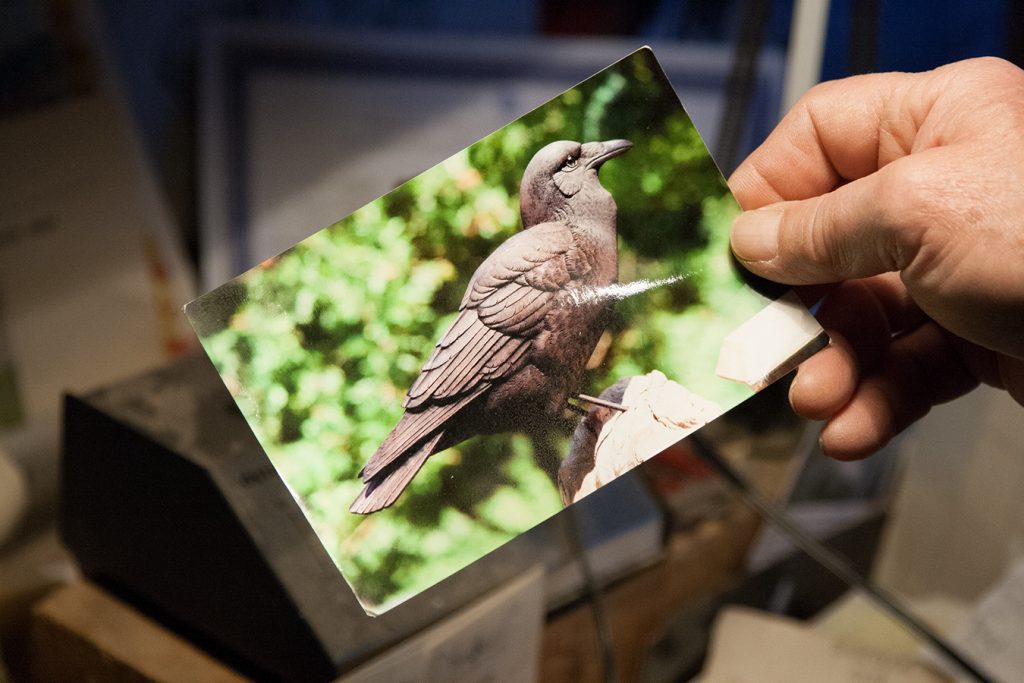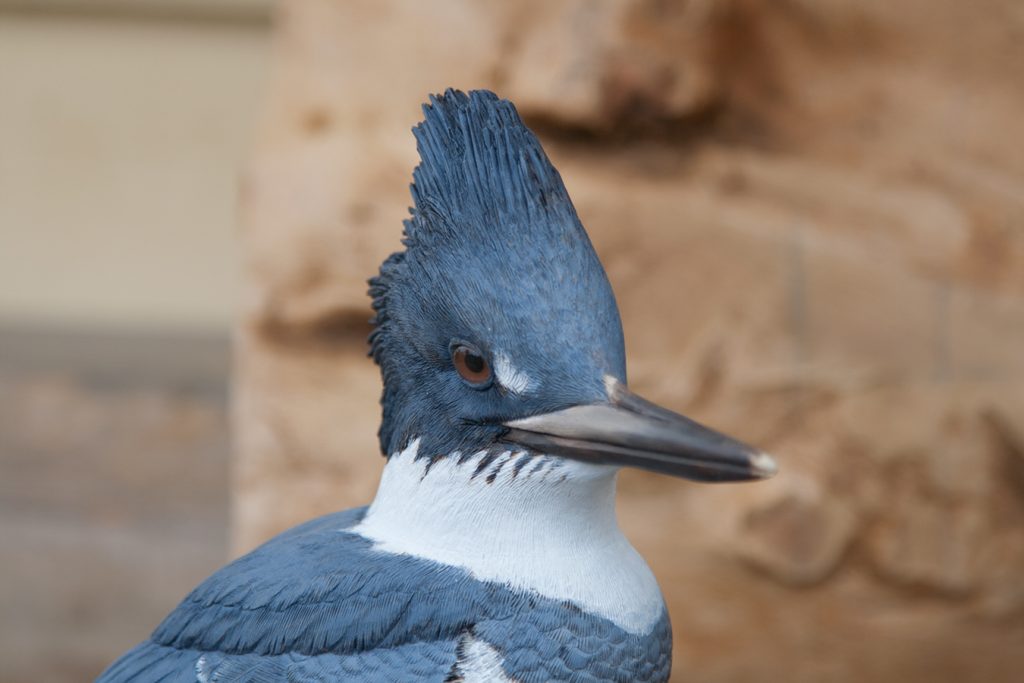Ron Gruber knows his woods. Basswood—called linden wood in Europe, where it’s made into cuckoo clocks—is “related to but better than cottonwood because it sands smooth. I sand it, carve feathers and detail in, burn the feathers, and then paint it with oils,” says the 72-year-old carver, describing a handsome, decorative hooded merganser hen in his wood-shavings-strewn workshop in the Spanish Banks home his father built 65 years ago.
Next, he proffers an exquisite belted kingfisher head made of light, strong tupelo wood. “They only harvest the bottom 15 feet of that tree. It’s logged and transported by canoe from gum swamps in the Southern states,” he says. “Tupelo is the soft wood of choice of many modern decorative carvers today. Look how the grain of wood goes with the kingfisher’s spikes on his head.” It’s only the third belted kingfisher of his 40-year career. The woman from Bowser, B.C., who commissioned the second one, with its distinctive reddish sash, cried when she got it. Gruber’s work has that effect on people.
By turns droll and self-effacing, Gruber wears his skills lightly for a man whose decorative birds and fish reside in collections in Canada, the U.S., Germany, Scotland, Japan, and beyond. What his collectors relish is the accumulation of a definitive naturalist’s eye translated into that challenging three-dimensional medium of wood. One of Gruber’s signature birds is the green-winged teal, which he has created from western redcedar foraged from the nearby beach. He would dry the wood for several months before carving it, burning it once for colour and then a second time for texture. Gruber’s carvings are so tactile, so lifelike, that it is hard to resist the urge to touch his creations.
Gruber’s carved birds have a presence, a gravitas, and those who have collected his work over the years get a daily satisfaction from his art.
Gruber’s parents paid for their only child to attend the Vancouver School of Art (now Emily Carr University) at an early age. (The Rhode Island Red chickens the family kept in their yard inspired young Gruber with their stellar colours for a class project.) Just as he knows his woods, he also knows his paints, eschewing the use of acrylic—the choice of many contemporary hyper-realistic modern decorative carvers—for oils, “because for me, acrylics hint of plasticity,” he says.
Nature has always had a profound effect on Gruber. His earliest memory of this appreciation came in Jasper while on the movie set of The Emperor Waltz (starring Bing Crosby), for which young Gruber’s parents had been hired as dancers. “I was five and saw a mule deer walking along the lane. I was stunned and then transfixed by that, and then by a moose in the lake, and feeding black bears behind the cookshack,” he says. “From then on, I knew what turned my crank was wildlife.”
Though his mother gave away his early art, the punters soon started coming, and Gruber was hard pressed to keep up with demand. He carved a seagull for former premier Gordon Campbell, he’s created more than 25 works of fish and birds for fellow artist and colleague Ken Kirkby, and over the years he has often traded carvings for antique decoys, the genesis of the decorative carving genre.
Gruber is also a dedicated volunteer with the Spanish Bank Creek Streamkeepers, a group that began clearing debris away from the stream about 15 years ago to restore it back to health and encourage the return of the salmon population. The small, realistic coho, chum, and pink fry that Gruber has carved to illustrate his talks to elementary and university school students alike seem to typify the man: an artist maestro dedicated to the nature he carves so effectively.
Gruber’s carved birds have a presence, a gravitas, and those who have collected his work over the years get a daily satisfaction from his art.
















